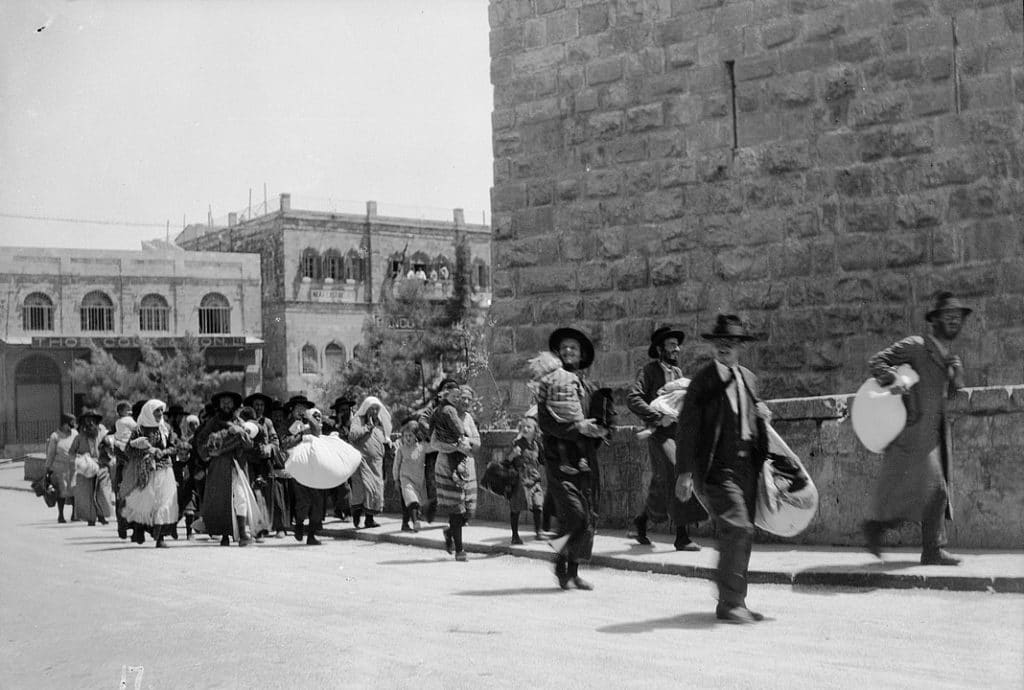The road to Oct. 7 began in Hebron
The 1929 massacre by local Arabs is not just a painful chapter in the past but a reality that still impacts the region.
By Moshe Phillips
JNS
Sep 8, 2025

Itamar Ben-Gvir, the outspoken Israeli
politician who currently serves as Israel’s Minister of National
Security, was recently targeted by Hamas for assassination. Fortunately,
the plot was uncovered in early September and the would-be murderers
from the “Hebron area,” according to reports, are now in custody.
This news item is among the first international news out of the “Hebron area” to break since Elliot Kaufman’s Wall Street Journal op-ed
on July 5, “A New Palestinian Offer for Peace With Israel,” which
offered a naive and misguided view of the potential for peace in the
region. Kaufman reported that local sheikhs in Hebron could take the
lead in peace efforts with Israel, ignoring the complexities and
political realities that make such an idea not only impossible and
impractical but dangerous.
It’s been two months since Kaufman’s article was published, and nothing substantial has come out of Hebron that he said was going to happen. His article was widely reported as news by nearly every major news outlet.
Kaufman’s suggestion that the sheikhs could be instrumental in peace talks overlooks many truths, and here’s just one: Peace negotiations require institutional authority, something the sheikhs simply don’t have. While they may have some influence on hyper-local affairs, they lack the political power to represent all Palestinians or to implement any peace agreement at a national level. Peace is not something that can be brokered over tea in a local council meeting; it requires legitimate authority, which they do not possess and cannot attain.

This point becomes even more significant when you consider Hebron’s violent history. The 1929 Hebron massacre—when 67 Jews were murdered and more than 70 others were wounded—is not just a painful chapter in the past but a reality that still impacts the region today. The massacre, which involved not only killings but also horrifying acts of sexual violence, left deep scars. The similarities between the Hebron massacre in 1929 and the atrocities committed on Oct. 7 are many, including the fact that seemingly noncombatants participated in the surprise attacks.
Hebron’s history is one of brutality
against Jews. Kaufman’s optimism ignores the deep-seated antisemitism
that is very much still present there.
He overlooks one of the
most significant factors that shape society in Hebron today: the power
and influence of Hamas, as the plot against Ben-Gvir demonstrates. While
Kaufman focuses on local leadership, he fails to engage with the
reality that Hamas has significant support in Judea and Samaria. During
the Hamas-led terrorist invasion of Israel on Oct. 7, 2023, many Hebron
Arabs openly supported the attacks. That isn’t a detail that can be
brushed aside. Hamas’s deep influence is a fact that needs to be
reckoned with. Kaufman’s dreams of peace—driven by sheikhs—ignore this
critical dynamic. The reality is that Hamas’s grip on Palestinian
society cannot be wished away.
In fact, his idealization of the
sheikhs also fails to account for their lack of formal political power.
They have no control over the police, military or judicial systems in
Hebron or within the broader area. More than that, they aren’t even
recognized by the international community as legitimate representatives
of the Palestinian Arabs. While they may have some sway within their own
communities, their ability to engage in meaningful negotiations or
secure a lasting peace is just not real. It is one thing to be
influential locally and quite another to be trusted with the power to
negotiate internationally.
Then there’s the Palestinian Authority
itself, which Kaufman seems to bypass in his analysis. While the P.A.
is widely regarded as a governing body in Palestinian Arab areas,
its control is shaky at best. Corruption, incompetence and a failure to
provide security or accountability have combined to weaken the P.A.
Worse still, it has been unable or unwilling to confront Hamas, which
continues to gain influence. Kaufman seems to overlook this crucial
fact—the P.A., despite its formal status, has shown little ability or
will to deliver stability.
At its core, Kaufman’s argument is
built on a misunderstanding of what is needed for peace between Israel
and its neighbors. His view of Hebron’s sheikhs as potential peacemakers
is overly simplistic and naive, ignoring the violent history of the
Arabs of Hebron and the deep divisions among Palestinians.
His
solution may sound appealing in theory, but it ignores the harsh
realities that make it unworkable. Until everyday Palestinians demand
that their leaders make real reforms, until Arab media, clerics and
leaders stop glorifying terrorism and antisemitism, and until Hamas is
defeated, negotiations will remain out of reach and any discussion of
negotiations will remain exactly that—a discussion.
No comments:
Post a Comment